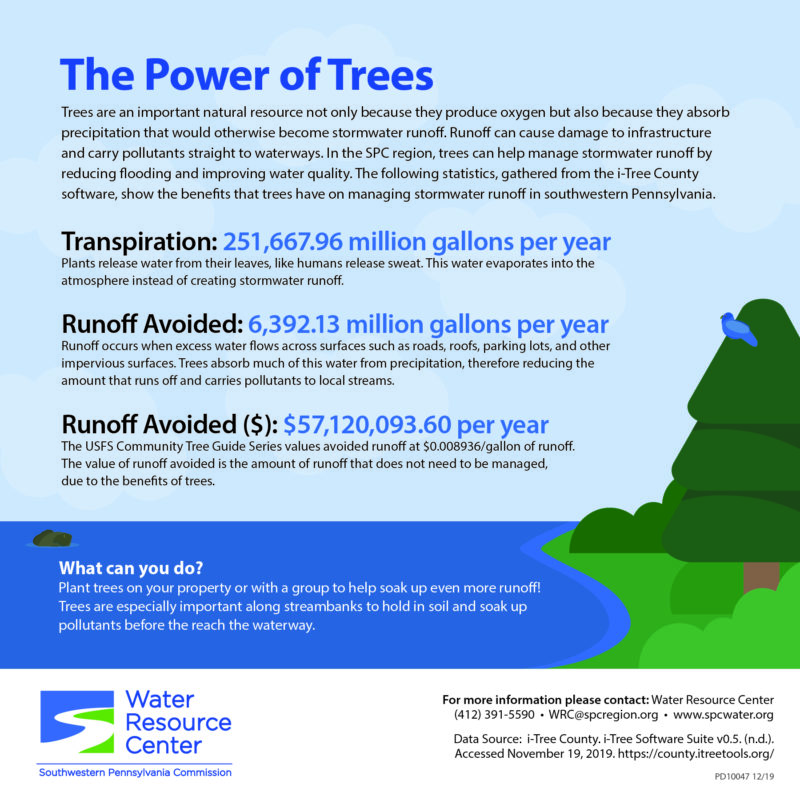Green Infrastructure
Unlike gray stormwater infrastructure, which uses pipes to dispose of rainwater, green infrastructure uses trees, vegetation, and soil to manage rainwater where it falls. The US Environmental Protection Agency (EPA) defines green infrastructure (GI) as using “vegetation, soils, and other elements and practices to restore some of the natural processes required to manage water and create healthier urban environments.” Some examples of green infrastructure, provided by EPA, include downspout disconnection, rainwater harvesting, rain gardens, planter boxes, bioswales, permeable pavements, green streets and alleys, green parking, green roofs, urban tree canopy, and land conservation. Other examples can include restoring wetlands and floodplains or planting trees.
Using Trees and Vegetation for Stormwater Management
Trees and vegetation are a key component of stormwater management. Trees and vegetation can improve groundwater infiltration, reduce both the rate and volume of runoff, improve water quality, provide wildlife habitat, increase property values, improve air quality, reduce the urban heat island effect, and uptake nutrients and other pollution that may runoff into local waterways (PA Stormwater BMP Manual). Native trees, shrubs, plants, and grasses should be utilized where possible. Native vegetation is adapted to local soils and climate, and therefore requires less maintenance and chemicals. Native species also provide food and habitat for local native species of bees, butterflies, birds, and wildlife. For more information on native species for Southwestern Pennsylvania go to our Stormwater Resources page.
Green Infrastructure:
National Case Studies and Pittsburgh Regional Initiatives
Green infrastructure has become an important tool for municipalities to utilize because there are multi-beneficial uses/functions for various aspects of stormwater management and the creation of more sustainable communities. Explore the national case studies and regional initiatives below.
Explore Stormwater Resources and Tools

